My sister, who is the family genealogist, tells we have an ancestor who came to Kobe, Japan as a missionary from 1907 to 1920. Mostly our ancestors have been a rather dull lot – no marriage to a duke or duchess, Highland robber nor great inventor; only the odd child born the wrong side of the blanket (such a horrible expression, note to self not to use again) to add a frisson of interest.
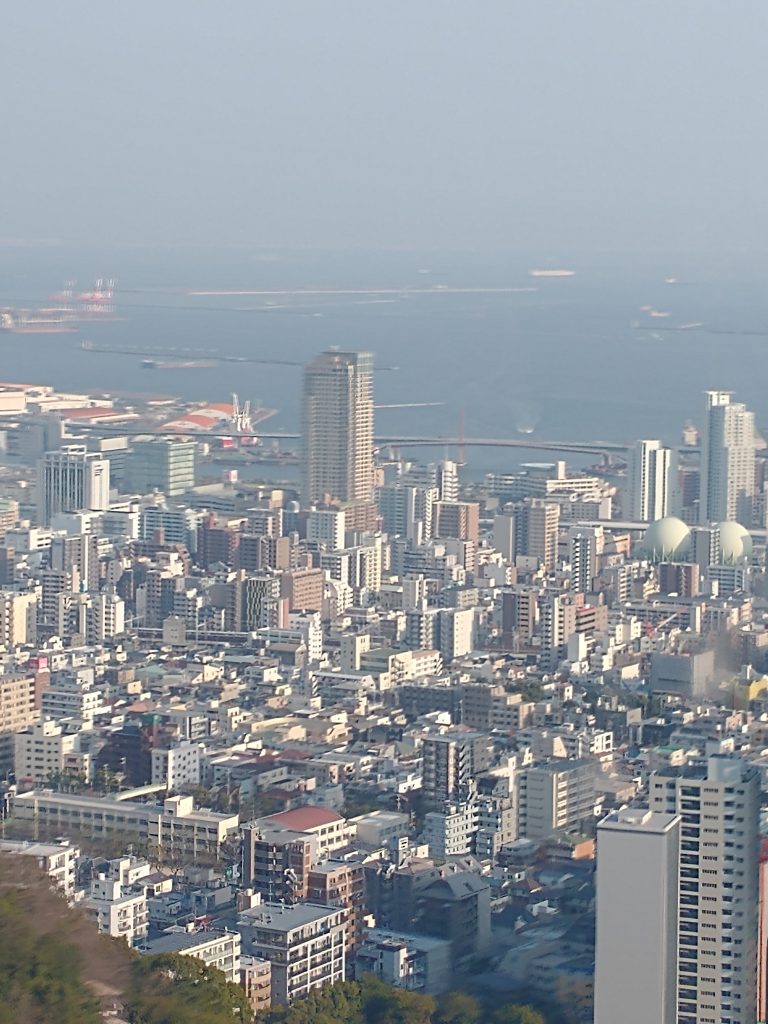
But a missionary in Kobe is of particular note because our eldest has lived there for the past eighteen years. And, as an inveterate reader of all the Anne of Green Gables books, it reminds me of something which puzzled me greatly aged eleven. In Anne of the Island, I think, Aunt Jamesina goes off to visit her daughter who is a missionary in Japan, despite her fear of snakes. Why, I wondered, would missionaries go to Japan?
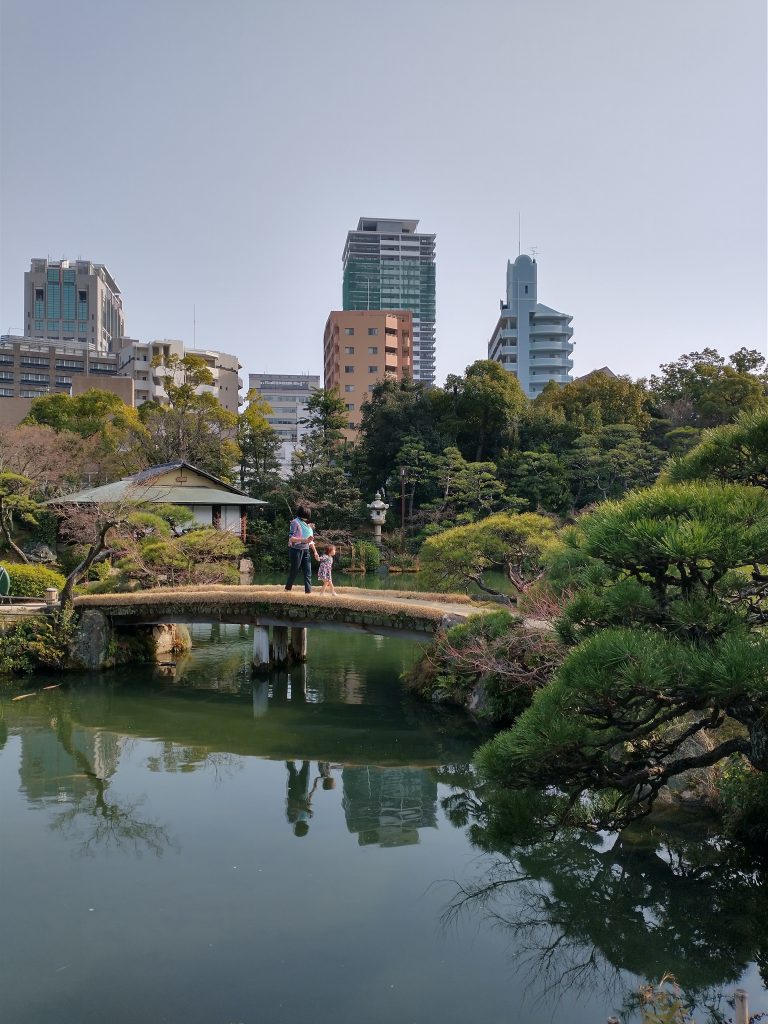
Why indeed. Yuval Noah Harari writes in Sapiens that Buddhism, Islam and Christianity are all examples of religions which actively seek new members – whereas Judaism and Hinduism, for instance, do not.
Mary Taylor, my great grandfather’s cousin, was not part of the first wave of missionaries to Japan, which happened much earlier. In 1549, which is the point at which the Reformation is gathering speed in Europe, Francis Xavier, a Portuguese missionary, steps foot on Japanese soil.
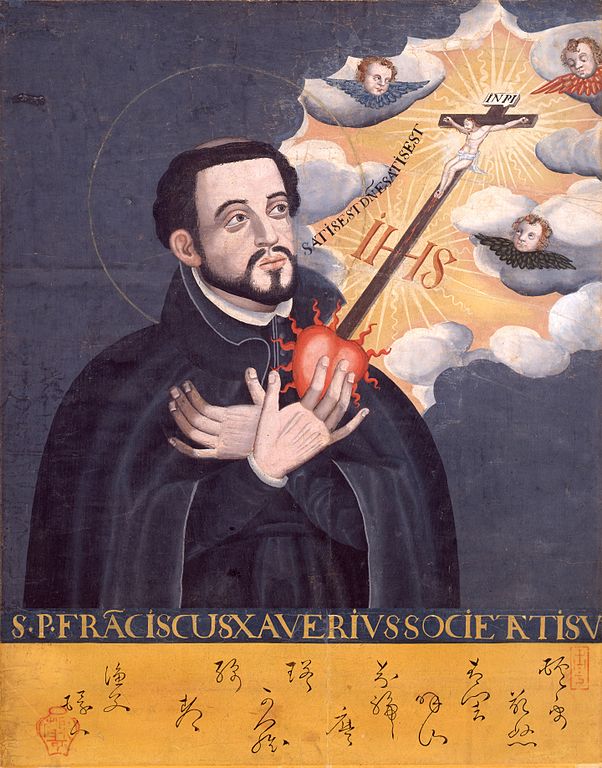
The Shogun tolerated the mission hoping it would improve trade but soon grew suspicious of this foreign influence especially when rumours spread this was how these foreigners infiltrated a country; first by sending missionaries who scoped the land and then following it up by military conquest. And indeed the Jesuits were involved in the trade and the supply of guns in Japan – which is why the Shoguns withdrew their permission to proselytising missions.
Many foreign missionaries were killed along with their converts. Most well known are the twenty six martyrs of Japan – four Franciscan missionaries from Spain, one from Portugal and Mexico, respectively, three Japanese Jesuits and seventeen Japanese members of the Third Order of St Francis including three young altar boys. In 1597 they were tortured, mutilated, and paraded through villages across Japan, before being crucified where they were impaled with lances while tied to crosses… shades of Vlad the Impaler a hundred years earlier in Europe (see my post here for more info)
Still in 1614 a samurai, Hasekura Tsunenaga, along with over a hundred Japanese and twenty other sumurai travelled, via Mexico which was then known as New Spain, stopped off in old Spain where he was baptised and given a Christian name, to Rome where he met the Pope. The purpose of the journey was however more about brokering trade deals than embracing a new religion.
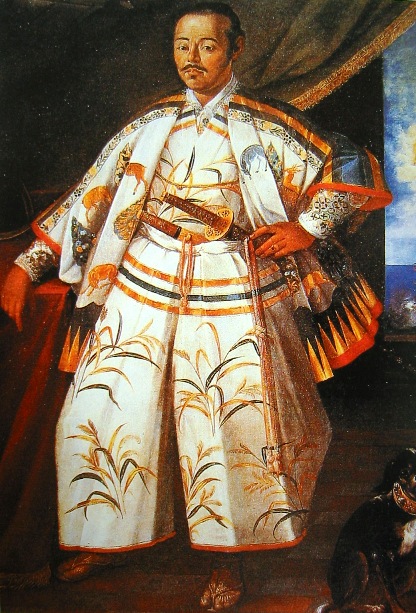
By the time he returned to Japan in 1620, Christianity was officially outlawed and he had to renounce his new religion. All Japanese Christians were forced to convert much as Jews were in Spain and Portugal – the impact of which is a theme in my novel The Conversos.
From then on Christianity was hidden and the numbers dwindled. Still it was secretly practised and concealed much as the Jewish Conversos did, as well as French Huguenots, during the Reformation.
These groups in Japan were known as Hidden Christians and secreted christian symbols in shrines, lanterns and within buildings. In Himeji Castle a christian cross was found carved in one of its seventeenth century roof tiles.

Martin Scorsese’s film Silence, based on the novel by Shusako Endo, is a powerful telling of the story of Hidden Christians and determined missionaries. But of course christian missionaries, certainly by the time my ancestor popped up in Japan, didn’t only bring faith they also thought it vital to ‘civilise’ which included having a ‘christian’ name, dressing ‘appropriately’ and following christian rituals.
The first Protestant mission to Japan came in 1859, soon after the United States negotiated a trade deal in 1853, and a Japanese translation of the bible was quickly made available.
On a recent visit to Kobe we walked daily through the Kitano area, now a much visited cultural curiosity, but once the part of Kobe where the foreign merchants and diplomats lived in large Western style homes. Many were built around 1907, and no doubt my ancestor strolled past them too.
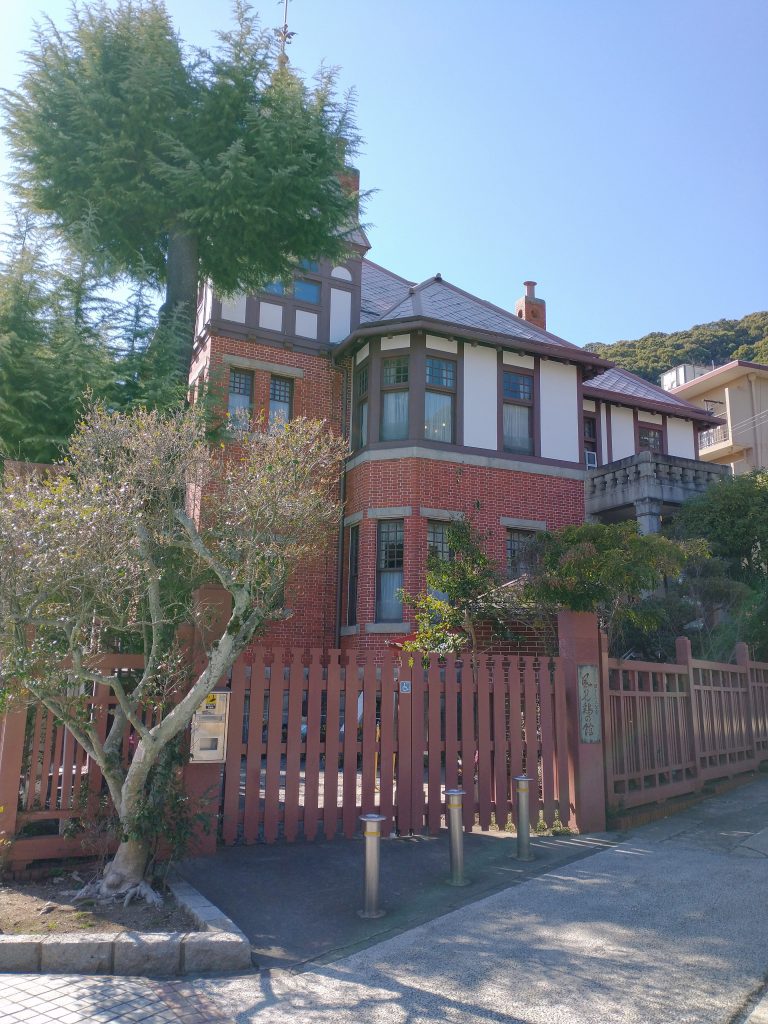
There’s even an English house with a Sherlock Holmes room, and the opportunity to dress up as the great detective which, judging by the queues, is popular.
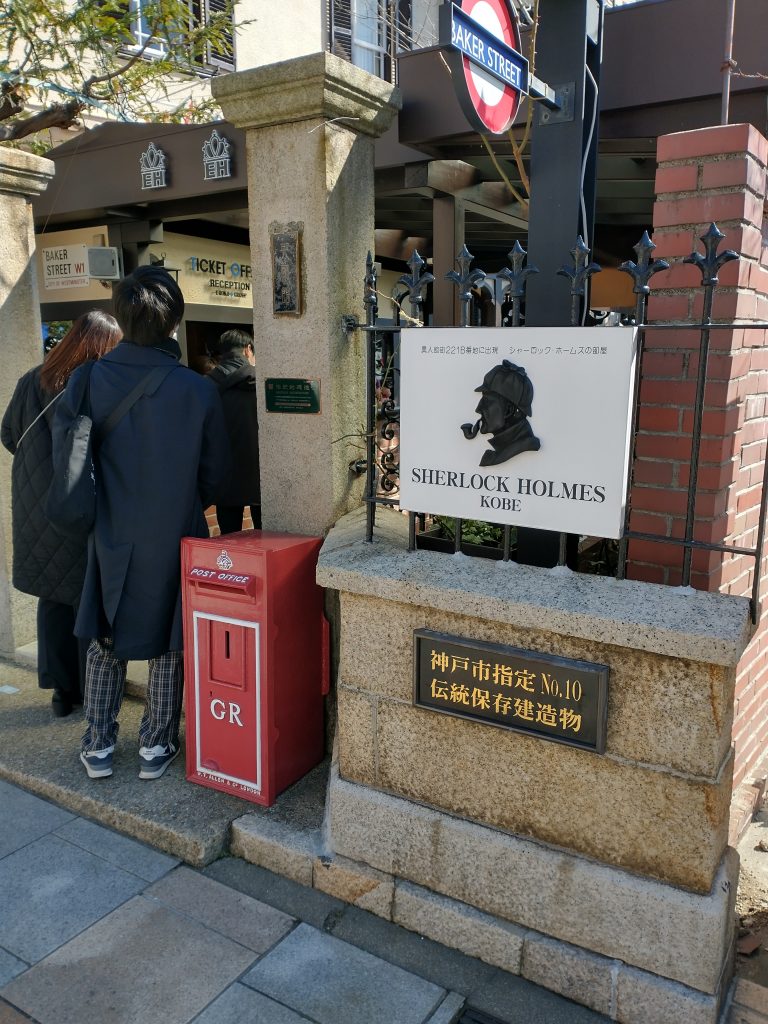
Another place of curiosity on our daily walk between our apartment and our son and daughter-in-law’s home was the Center for Overseas Migration and Cultural Integration.
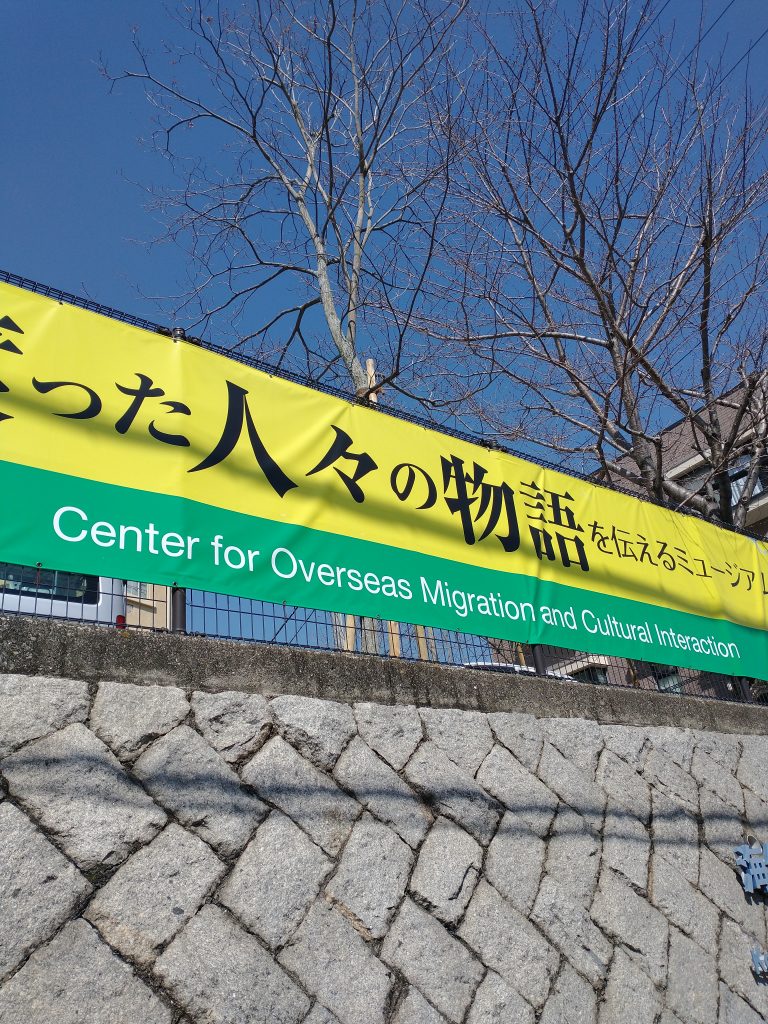
Wandering inside I discovered an exhibition about emigration, mainly to Brazil – over a quarter of a million people went there from Kobe alone. Kobe was the port of embarkation for Japan and the exhibition focuses on shipboard life but says little of the hardships immigrants endured once they arrived.
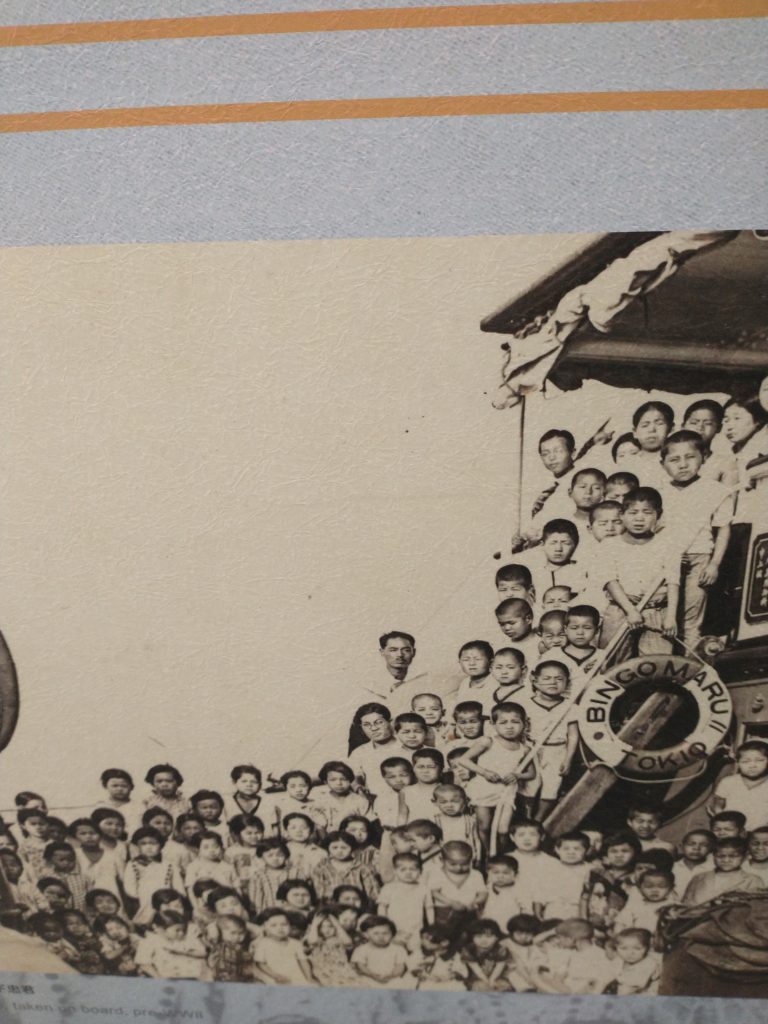
In a period of famines Japanese people looked to go overseas, make some money and bring it home. The United States and Australia had policies limiting ‘non European’ immigration but other countries needed cheap labour especially Brazil. The coffee plantation owners wanted to ensure immigrants would stay so they only took families, and once there they were trapped as it was almost impossible for the family to save enough money for them all to return.
Japanese people in Brazil remained apart, schooled their children separately and inter-married.
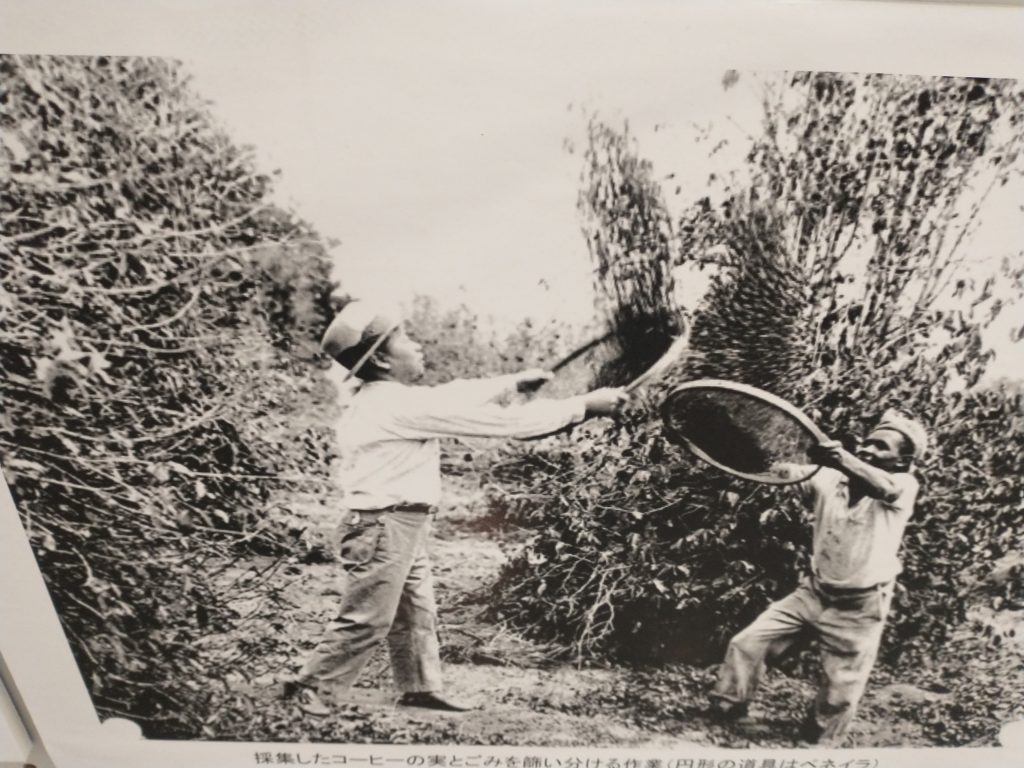
As for my missionary ancestor, who left Japan finally in 1920, it seems she did not resettle in Scotland for she died in Canada in the 1940s. I wonder what she made of her time in Japan and if she felt her attempt to bring Protestantism to it worthwhile. There are Evangelical Missions here still, mainly from North America and having a white wedding is popular – but without the christian ceremony.
We were visiting Kobe soon after the birth of our youngest grandchild and were fortunate to attend his naming ceremony in a Buddhist Temple. Wonder what Cousin Mary would’ve had to say to that…
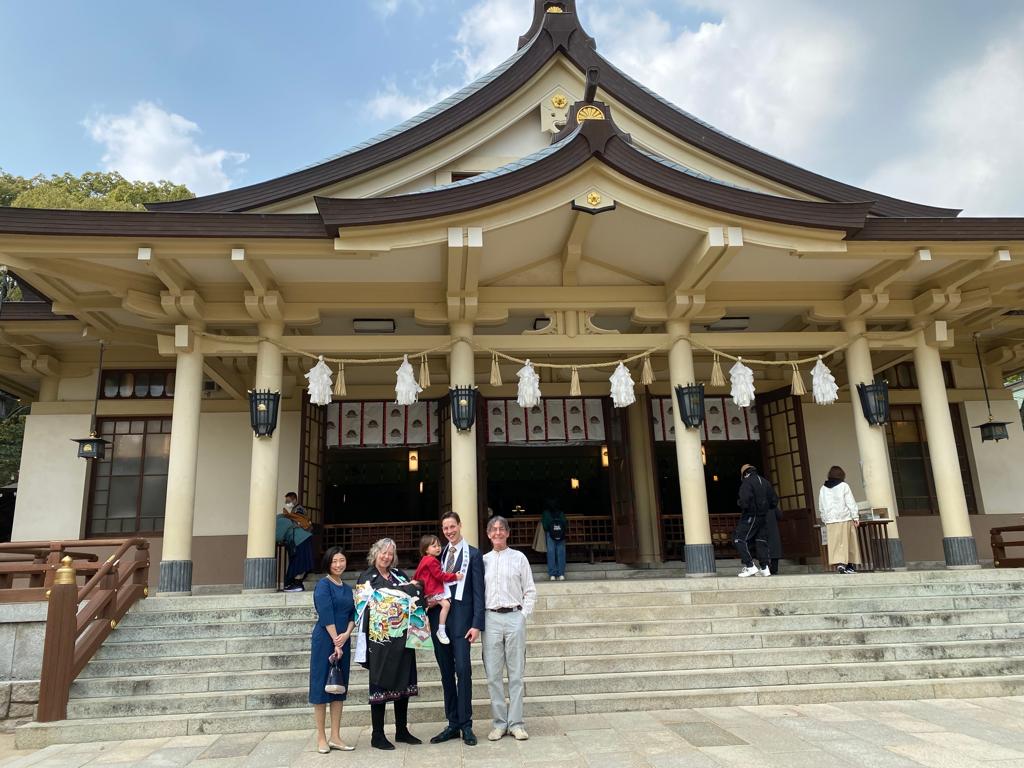
My books are available on Amazon, Kindle Unlimited and can be ordered from any good bookshop.
as well as in bookshops and all Amazon online stores. None set in Japan yet, but who knows!
References:
Yuval Noah Harari, Sapiens
Isikawa Akito, A Little Faith: Christianity and the Japanese
A. C. Palfreeman, Non-White Immigration to Australia
Wikipedia – inevitably


Really enjoyed your story and all the information it contained. Love reading about things I know very little about. I look forward to your next . By the way I have read/listened to all your books. Most of which contained things I knew little about the different religions during the time of the stories. Look forward to your next writings.
glad you enjoyed it. I found it fascinating to research. Thanks for commenting